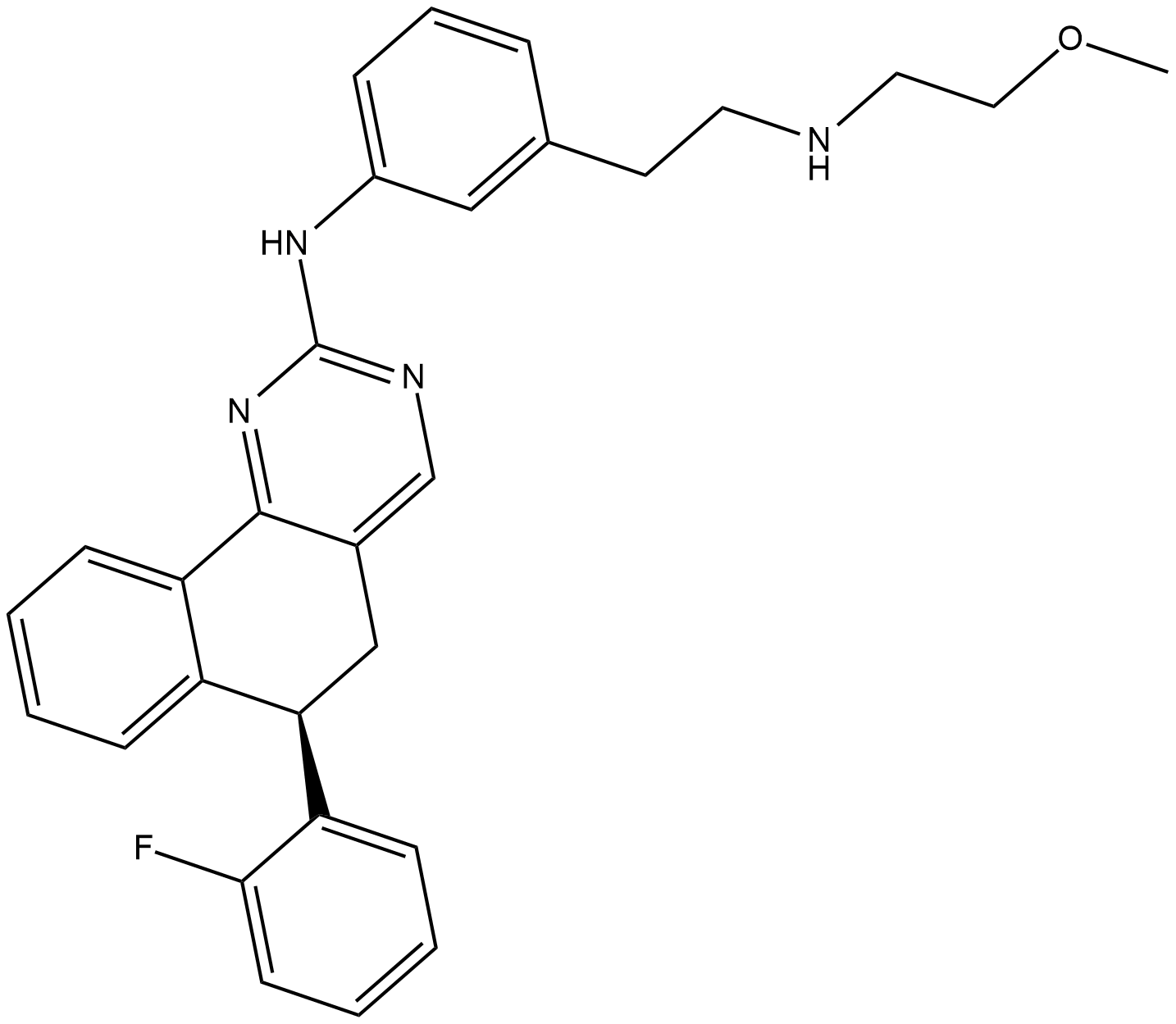Derazantinib (Synonyms: ARQ 087) |
| Catalog No.GC19399 |
Derazantinib (ARQ-087) is an ATP competitive tyrosine kinase inhibitor; exhibits potent activity against FGFR1-3 chondrocytes with IC50s of 4.5, 1.8, and 4.5 nM, respectively.
Products are for research use only. Not for human use. We do not sell to patients.

Cas No.: 1234356-69-4
Sample solution is provided at 25 µL, 10mM.
Derazantinib (ARQ-087) is an ATP competitive tyrosine kinase inhibitor; exhibits potent activity against FGFR1-3 chondrocytes with IC50s of 4.5, 1.8, and 4.5 nM, respectively.
In cells, inhibition of FGFR2 auto-phosphorylation and other proteins downstream in the FGFR pathway (FRS2α, AKT, ERK) is evident by the response to Derazantinib treatment. Cell proliferation studies demonstrate Derazantinib has anti-proliferative activity in cell lines driven by FGFR dysregulation, including amplifications, fusions, and mutations. Cell cycle studies in cell lines with high levels of FGFR2 protein show a positive relationship between Derazantinib induced G1 cell cycle arrest and subsequent induction of apoptosis[1]. Derazantinib rescues the FGF2-mediated growth arrest with EC50 at about 100 nM, with no significant toxicity detected for up to 500 nM. The concentration range at which Derazantinib significantly suppresses the FGF2 effect is between 70-500 nM. Derazantinib inhibits FGF-mediated loss of extracellular matrix and induction of chondrocyte premature senescence. Derazantinib rescues FGF-mediated inhibition of chondrocyte differentiation in tibia cultures. Derazantinib inhibits FGFR1-4 but no other receptor tyrosine kinases in cell-free kinase assay. Derazantinib inhibits FGFR1 and FGFR2 mutants associated with craniosynostoses. Derazantinib rescues FGFR-mediated bone differentiation in mouse limb bud micromass cultures and ex vivo mouse calvarial organ cultures[2].
Derazantinib is effective at inhibiting tumor growth in FGFR2 altered, SNU-16 and NCI-H716, xenograft tumor models with gene amplifications and fusions[1]. Most of the embryos exhibit abnormal external phenotype (81.3%) in Derazantinib-injected wings, possibly due to inhibition of proliferation of limb bud mesenchyme. The wings are shorter and thinner, with skeletal phenotype typical for FGFR inhibition, where ulna and radius are shorter or smaller in size, or occasionally missing completely[2].
References:
[1]. Hall TG, et al. Preclinical Activity of ARQ-087, a Novel Inhibitor Targeting FGFR Dysregulation. PLoS One. 2016 Sep 14;11(9):e0162594.
[2]. Balek L, et al. ARQ-087 inhibits FGFR signaling and rescues aberrant cell proliferation and differentiation in experimental models of craniosynostoses and chondrodysplasias caused by activating mutations in FGFR1, FGFR2 and FGFR3. Bone. 2017 Dec;105:57-66.
Average Rating: 5 (Based on Reviews and 26 reference(s) in Google Scholar.)
GLPBIO products are for RESEARCH USE ONLY. Please make sure your review or question is research based.
Required fields are marked with *




















